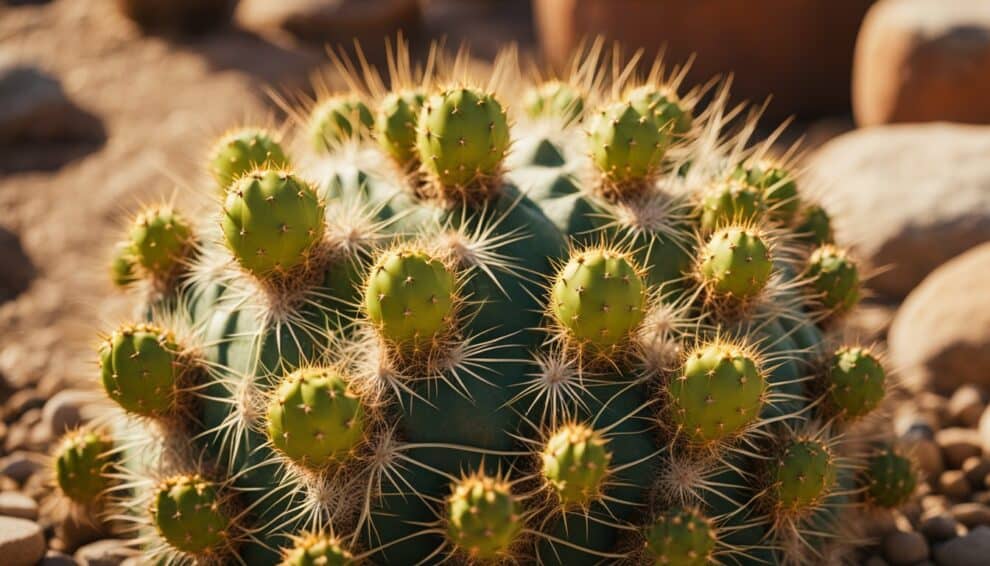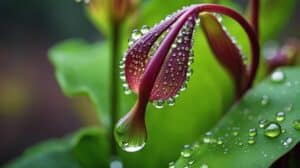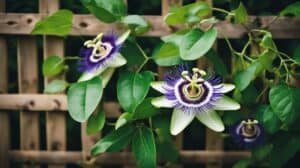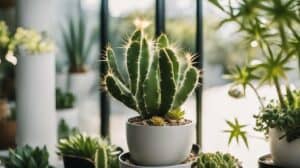Golden Barrel Cactus, also known as Echinocactus Grusonii, is a popular cactus species that is native to Mexico.
It is characterized by its spherical shape, ribbed texture, and golden yellow spines that cover its surface.
This cactus species is a popular choice among cactus enthusiasts due to its unique appearance and low-maintenance requirements.

Cultivating Golden Barrel Cactus can be a rewarding experience for both novice and experienced gardeners.
However, proper care is essential for the health and longevity of this cactus species.
In this article, we will provide tips and guidelines for cultivating and maintaining healthy Golden Barrel Cactus.
From selecting the right soil and pot to watering and fertilizing, we will cover everything you need to know to keep your Echinocactus Grusonii thriving.
Understanding Echinocactus Grusonii
Species Overview
Echinocactus Grusonii, commonly known as the Golden Barrel Cactus, is a popular cactus species that belongs to the Cactaceae family.
This cactus species is native to Mexico and is widely cultivated for its ornamental value.
The Golden Barrel Cactus is a slow-growing cactus that can reach up to 3 feet in height and 2 feet in diameter.
It has a rounded shape and is covered with golden-yellow spines that can grow up to 3 inches long.
Natural Habitat
The Golden Barrel Cactus is native to the hot and dry regions of Central Mexico, where it grows in rocky and sandy soils.
This cactus species is adapted to survive in extreme conditions, such as drought and high temperatures.
In its natural habitat, the Golden Barrel Cactus can grow up to 10 feet tall and can live for several decades.
Due to the high demand for this cactus species, it has been over-collected from its natural habitat, and it is now considered an endangered species in the wild.
To cultivate the Golden Barrel Cactus successfully, it is essential to understand its natural habitat and growing conditions.
This cactus species requires well-draining soil, bright sunlight, and infrequent watering.
Overwatering or planting the cactus in a poorly-draining soil can lead to root rot and other diseases.
By providing the right growing conditions, the Golden Barrel Cactus can thrive and add a touch of beauty to any garden or landscape.
Essential Care Guidelines

When it comes to cultivating the Echinocactus Grusonii, commonly known as the Golden Barrel Cactus, there are a few essential care guidelines to keep in mind.
Here are some tips to help ensure your cactus thrives:
Lighting Requirements
The Golden Barrel Cactus requires plenty of bright, direct sunlight to grow properly.
It is recommended to place the cactus in a south-facing window or another location that receives at least six hours of sunlight per day.
If growing the cactus outdoors, it is important to provide some shade during the hottest parts of the day to prevent sunburn.
Watering Techniques
Overwatering can be a significant problem for the Golden Barrel Cactus. It is crucial to allow the soil to dry out completely between waterings.
During the growing season, which is typically from spring to fall, the cactus should be watered once every two to three weeks.
In the winter, the cactus can go even longer without water.
Soil and Fertilization
The Golden Barrel Cactus prefers well-draining soil that is slightly acidic.
A cactus or succulent mix can be used, or a homemade mix of sand, perlite, and peat moss.
Fertilization is not necessary for this cactus, but a diluted solution of cactus fertilizer can be applied once a month during the growing season.
Temperature and Humidity
The Golden Barrel Cactus can tolerate a wide range of temperatures, but it prefers warm temperatures between 70-80°F (21-27°C) during the day and cooler temperatures between 50-55°F (10-13°C) at night.
Humidity is not a significant concern for this cactus, as it can tolerate low humidity levels.
However, it is essential to provide adequate ventilation to prevent stagnant air around the cactus.
Propagation and Repotting

Propagation Methods
Golden barrel cactus can be propagated by seeds or offsets. Seeds can be collected from the fruit of a mature plant and sown in well-draining soil.
It is important to keep the soil moist until the seeds germinate, which can take several weeks.
Offsets, also known as “pups,” can be removed from the base of a mature plant and replanted in a separate container.
It is important to allow the offset to dry for a few days before planting to prevent rotting.
Repotting Steps
Golden barrel cactus should be repotted every 2-3 years to ensure healthy growth.
When repotting, it is important to use a well-draining soil mix and a container with drainage holes.
To repot, gently remove the cactus from its current container and remove any dead or damaged roots.
Place the cactus in the new container and backfill with soil, making sure to pack the soil around the roots.
Water the cactus lightly and avoid watering again for a few days to allow the roots to settle.
It is important to handle the golden barrel cactus with care during repotting, as the spines can cause injury.
Wearing gloves and using a towel to handle the cactus can help prevent injury.
Common Issues and Solutions

Pest Infestations
The Golden Barrel Cactus is generally resistant to pests, but it can still fall prey to some common pests such as mealybugs, spider mites, and scale insects.
These pests can cause damage to the cactus by sucking out its sap, which can lead to stunted growth, yellowing, and wilting.
To prevent pest infestations, inspect your cactus regularly and remove any visible pests by wiping them off with a cotton swab dipped in rubbing alcohol.
You can also use an insecticidal soap or neem oil to treat the cactus.
Disease Prevention
Golden Barrel Cacti are susceptible to root rot, which is caused by overwatering and poor drainage.
Symptoms of root rot include a soft and mushy stem, yellowing or wilting, and a foul odor.
To prevent root rot, make sure the soil is well-draining and allow the soil to dry out completely before watering again.
Avoid getting water on the stem of the cactus, as this can lead to rot.
Handling Rot and Damage
If your Golden Barrel Cactus has been damaged or is showing signs of rot, it’s important to act quickly to prevent further damage.
First, remove any damaged or rotting tissue with a clean, sharp knife.
Allow the wound to dry out for a few days before applying a fungicide to prevent infection.
If the damage is severe, you may need to repot the cactus in fresh, well-draining soil and allow it to recover in a shaded area for a few weeks before gradually reintroducing it to full sunlight.
Frequently Asked Questions

What are the optimal lighting conditions for a Golden Barrel Cactus?
Golden Barrel Cacti thrive in bright, direct sunlight. They require at least six hours of direct sunlight every day to grow and maintain their shape.
It is best to place them near a south-facing window or outdoors in a sunny spot.
However, be careful not to expose them to too much direct sunlight, as this can cause sunburn.
Can Golden Barrel Cacti survive frost and what temperatures are ideal for them?
Golden Barrel Cacti are native to hot and arid regions of Mexico, and they are not frost-resistant. They cannot survive in temperatures below freezing.
The ideal temperature range for these cacti is between 60 and 85 degrees Fahrenheit.
What is the best soil mix for planting Echinocactus grusonii?
Golden Barrel Cacti prefer well-draining soil that is slightly acidic.
A cactus potting mix, which is a blend of sand, perlite, and peat moss, is an excellent choice for planting these cacti.
Alternatively, you can make your own soil mix by combining sand, perlite, and regular potting soil in equal parts.
How often should I water my Golden Barrel Cactus?
Golden Barrel Cacti are drought-tolerant and do not require frequent watering.
It is best to water them deeply once every two to three weeks during the growing season (spring and summer).
During the dormant season (fall and winter), reduce watering to once a month.
What are the signs of overwatering in a Golden Barrel Cactus?
Overwatering can cause root rot, which can be fatal to Golden Barrel Cacti.
Signs of overwatering include yellowing or wilting of the cactus, soft and mushy stem, and a foul odor.
If you notice any of these signs, reduce watering immediately and allow the soil to dry out completely before watering again.
When and how should I repot my Golden Barrel Cactus?
Golden Barrel Cacti should be repotted every two to three years. The best time to repot them is in the spring when they are actively growing.
When repotting, choose a pot that is slightly larger than the current one and has drainage holes.
Carefully remove the cactus from its current pot, remove any dead or damaged roots, and plant it in the new pot with fresh soil.
Allow the soil to dry out completely before watering again.














